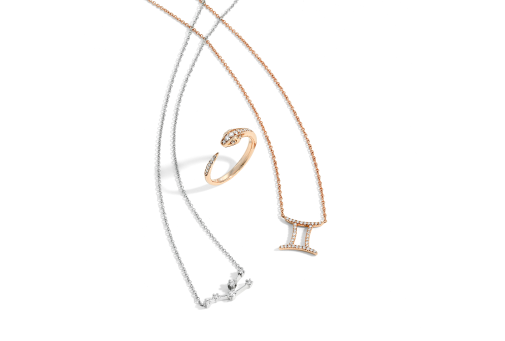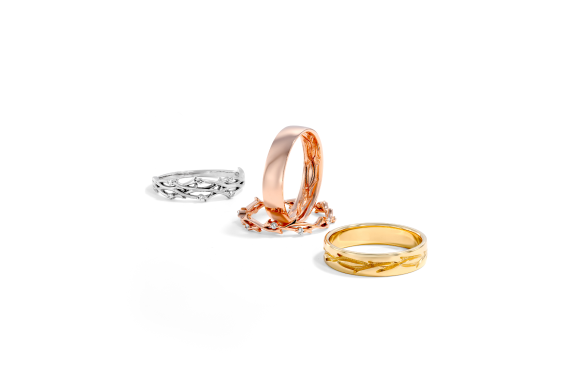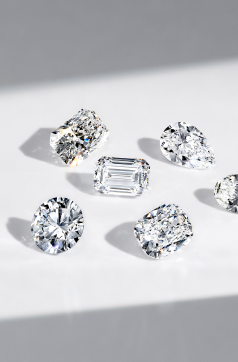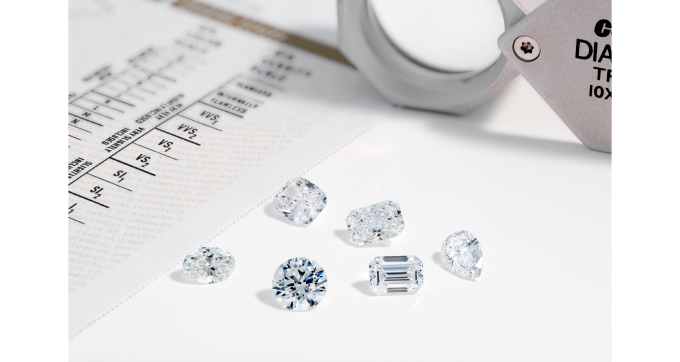You’re searching for the perfect engagement ring, and two diamond shapes have captured your attention. One, the radiant cut, sparkles with sharp, modern angles and electrifying brilliance, while the other, elongated cushion cut radiates a soft, romantic glow with a vintage-inspired charm. These two favorites offer distinct styles that speak to different tastes and preferences.
So, how do you decide? Both cuts are stunning, but their unique features set them apart in ways that go beyond surface beauty. In this guide, we’ll explore these two popular cuts in detail, comparing their features to help you decide which one is perfect for your dream ring.
Elongated Cushion Cut: A Shape That Stands Out
The elongated cushion cut traces its origins back to the 19th century, evolving from the vintage old mine cut that was popular during the Victorian era. This romantic shape combines the charm of antique designs with modern chic, offering a look that feels timeless and sophisticated. Because it has a greater length-to-width ratio than a standard cushion cut, it often appears larger on the finger.
Elongated cushion cuts are known for their rounded corners, soft edges, and pillow-like silhouette. Their anatomy features straight sides and a slightly curving crown, giving them a delicate yet striking appearance. Thanks to their gentle contours, these diamonds are often favored in vintage-inspired settings like The Jasmine and romantic three stone designs like The Pave Liv that amplify their soft beauty.
Why the Radiant Cut is a Brilliant Choice
In contrast to elongated cushion cuts, the radiant cut is a modern innovation, created in the late 1970s by Henry Grossbard. Designed to combine the brilliance of round diamonds with the angular symmetry of an emerald cut, the radiant shape is a true hybrid that delivers both sparkle and structure.
Radiant diamonds are defined by their sharp angles, cropped corners, and flat table, giving them a contemporary and geometric appearance that looks stylish in intricate designs like The Amber as well as streamlined solitaires like The Ashley. Their unique faceting ensures they reflect light as beautifully as a round diamond, while their sleek lines add a bold, architectural edge.
Elongated Cushion vs. Radiant Cut: What’s the Difference?
While both shapes have elongated silhouettes and breathtaking beauty, key differences in sparkle, color, clarity, ratio, and price set them apart. Let’s take a closer look at each of these factors and how they manifest in both diamond cuts.
Sparkle
The sparkle of a diamond depends largely on its facet pattern. Elongated cushion cuts are available in standard brilliant and modified brilliant faceting styles, resulting in either a soft glow or a "crushed ice" effect. Their rounded corners create a more romantic motif, especially in vintage-inspired rings like The Elizabeth. Radiant cuts, on the other hand, feature a tightly packed facet pattern similar to a round diamond; in side stone settings like The Mia, they deliver an especially intense light reflection and sparkle.
Color
Both shapes feature deep pavilions that enhance light reflection, creating vibrant and luminous diamond color. This brilliance adds a captivating sparkle that draws the eye from every angle: the sleek silhouette of a solitaire like The Kamellie amplifies the vibrancy of an elongated cushion cut while the opulent Pave Nelly brings out the glow of a radiant cut diamond. For a crisp and luminous appearance, consider choosing a color grade of H or higher for either cut, ensuring the diamond appears beautifully colorless.
Ratio
The length-to-width ratio of a diamond determines its overall shape. Elongated cushion cuts usually have a ratio range of 1:1.15 to 1:1.30, which strikes a balance between classic and elongated and makes it a favorite for romantic, vintage-inspired designs. Radiant cuts, on the other hand, have ratios that range from 1:1.30 for square shapes to 1:40 or more for dramatic rectangles, providing options to suit a variety of preferences.
Clarity
Both cuts conceal inclusions, but they do so in slightly different ways. Elongated cushion cuts with modified brilliant faceting are an excellent option for diamonds with lower clarity grades. Similarly, radiant cuts have several small facets that scatter light, minimizing the visibility of imperfections even in diamonds with noticeable flaws. In a modest solitaire setting like The Ashley, their incomparable clarity truly stands out.
Price
The price of a diamond can vary based on its shape. Elongated cushion cuts are typically more expensive because cutting them creates higher diamond rough waste. Depending on size, color, and clarity, they can cost up to 10% more than comparable radiant cuts. Radiant cuts, in contrast, are more cost-effective. Their design allows for better use of the rough material, and they are more widely available, offering exceptional sparkle at a lower price point.
The combination of sparkle, color, clarity, ratio, and price gives each diamond cut its unique charm. The elongated cushion cut offers a romantic, vintage-inspired glow, while the radiant cut delivers intense brilliance and a modern edge. Choosing between the two ultimately comes down to personal preference—whether you prefer the soft elegance of the cushion cut or the dazzling sparkle of the radiant cut, the right diamond is the one that feels perfect for you.
Elongated Cushion vs. Radiant Cut: Who’s the Winner?
At Keyzar, we believe the shape of the diamond in your engagement ring should make it even more exceptional to you. Whether you’re captivated by the timeless charm of an elongated cushion cut or the modern brilliance of a radiant cut, our unparalleled customization options allow you to design a ring that reflects your unique style. We’re here to help you find or create the perfect ring, tailored just for you.
No matter which shape you choose, your diamond will sparkle with the same beauty and meaning as your love. Shop now to find the piece that’s destined to be yours.





